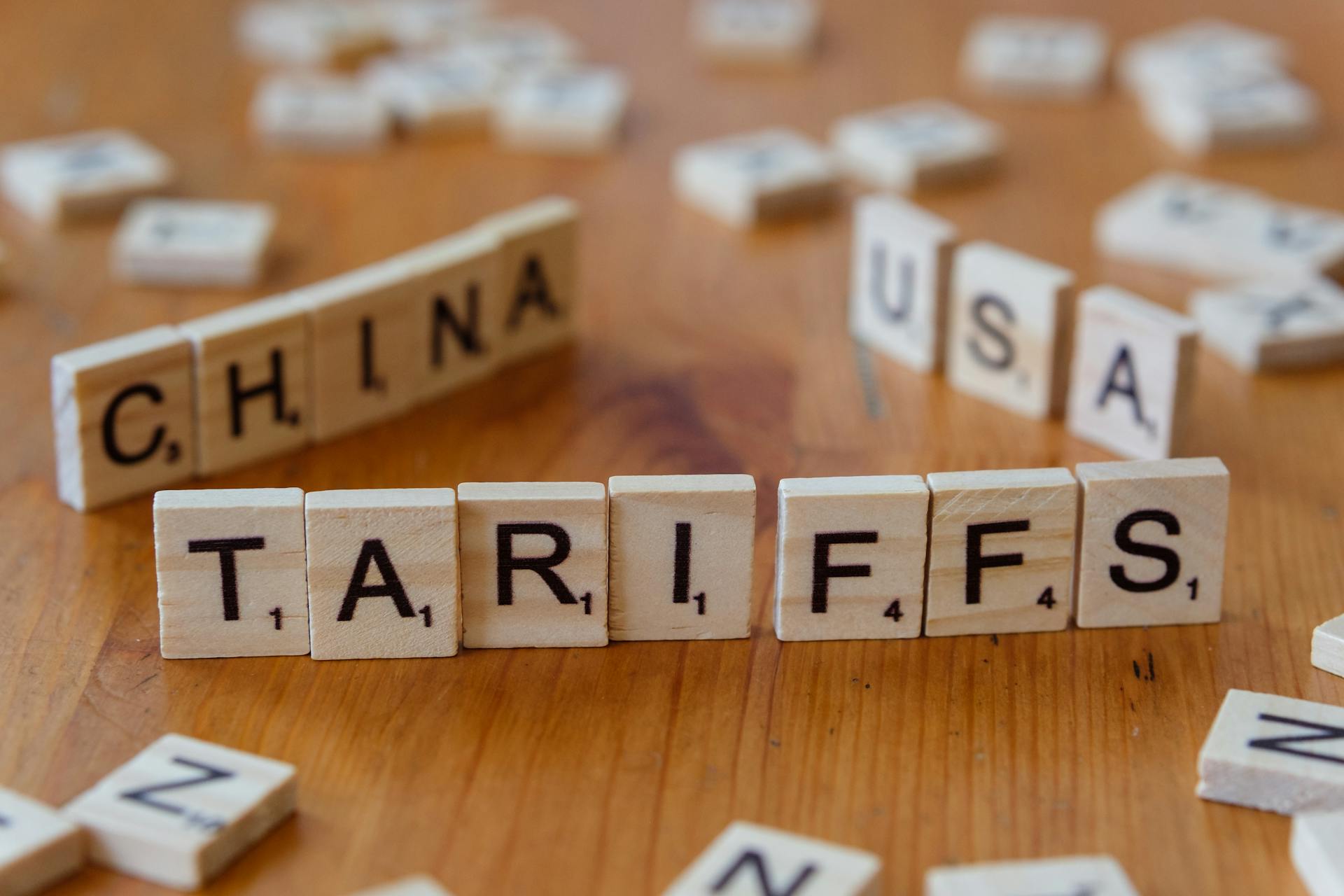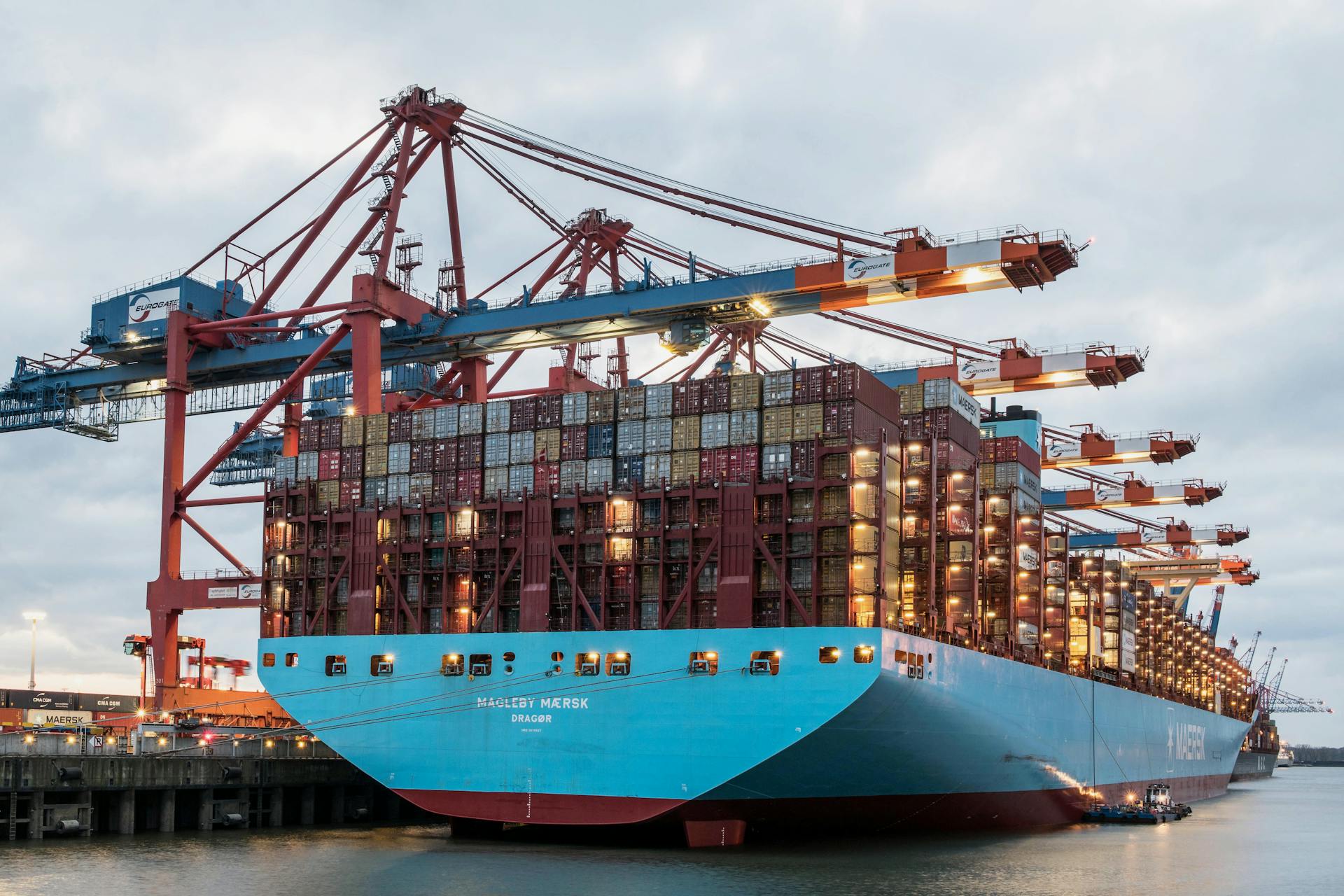
Canada has a complex system of import duties and taxes that can be overwhelming for businesses and individuals alike. The Canadian government imposes a 5% Goods and Services Tax (GST) on most imported goods.
To determine the duty rate on a particular item, you'll need to look up the Harmonized System (HS) code, which is a standardized system used to classify goods for customs purposes. The HS code will tell you the duty rate, but keep in mind that rates can vary depending on the country of origin.
If you're importing goods from the United States, you're in luck - Canada has a free trade agreement with the US, which eliminates duties on many goods. However, not all goods are eligible for duty-free treatment, so be sure to check the rules of origin to see if your goods qualify.
Import Duties and Taxes
If your goods are marked as made in the United States, Canada, or Mexico, and are accompanied by a North American Free Trade Agreement (NAFTA) certificate, no duty is payable.

Canada has a higher duty free threshold for goods shipped from the USA, with a value under CA $150 importing duty free, although local sales taxes still apply.
The default duty free threshold for imports to Canada is CA$20, but qualifying origin goods import duty free, as long as they meet the rules of origin of the relevant agreement.
The Canada Border Services Agency (CBSA) assesses duty and taxes on international packages arriving in Canada, and Canada Post collects these fees on behalf of the Government of Canada.
Most goods are subjected to a tax rate ranging from 0% to 35%, with an average rate of 8.56%, although certain goods like books, computers, and some types of foods and agricultural products can be imported duty-free.
Here are the key factors to consider when calculating customs duties in Canada:
- Type of goods being imported
- Value of the goods
- Country of origin of the goods
To avoid common mistakes, it's essential to:
- Provide accurate and truthful information about the value of goods
- Classify goods correctly using the Harmonized System (HS) Code
- Be aware of any additional taxes like the Goods and Services Tax (GST)
- Keep detailed records of all transactions for future reference or in case of audits
Exemptions and Thresholds
Canada's customs duty rates can be complex, but understanding the exemptions and thresholds can make a big difference. If you're returning to Canada after a trip, you may qualify for a personal exemption from customs duty rates.
The length of your absence from Canada determines the value of goods you can import without paying duties. If you're back in less than 24 hours, there are no personal exemptions for same-day cross-border shoppers. However, if you've been away for 24 hours or more, you can bring in up to CAD$200 worth of goods without paying duties.
If you've been gone for 48 hours or more, you can import up to CAD$800 worth of goods, including alcohol and tobacco products within the prescribed limits. The same applies if you've been away for 7 days or more.
Here's a summary of the personal exemptions:
It's essential to note that these exemptions don't apply to tobacco and tobacco products, which may have a minimum duty applied.
Calculating Duties
Calculating duties is a crucial step in the import process, and it's essential to get it right to avoid costly mistakes. The type of goods being imported is a key factor in determining the duty rate, which can be found in the Customs Tariff document.
The value of the goods is also crucial, as duties are often calculated as a percentage of the goods' value. This means that even a small mistake in valuation can result in a significant overpayment of duties.
The country of origin of the goods can also impact the duty rate due to various trade agreements that Canada has with other countries. This is why it's essential to research and understand the specific trade agreements that apply to your goods.
To accurately estimate customs duties, consider the following factors:
By carefully considering these factors, you can accurately estimate the customs duties you'll need to pay and avoid costly mistakes.
Trade and Tariffs
Trade and Tariffs is a complex topic, but I'll break it down for you. Canada collects an Import Levy on beef cattle, beef, and beef products, equal to the domestic check-off amount per head or equivalent.
The Farm Products Council of Canada supervises the CDCRMDP Agency's activities. This agency is responsible for collecting the Import Levy.
Canada has a higher duty-free threshold for goods shipped from the USA, thanks to the USMCA. Goods with a value under CA $150 can import duty-free, but local sales taxes still apply.
Here's a quick rundown of the tax rates:
- Most goods are subjected to a tax rate ranging from 0% to 35%, with an average rate of 8.56%.
- Certain goods like books, computers, and some types of foods and agricultural products can be imported duty-free.
The Canada Border Services Agency (CBSA) is responsible for assessing and collecting customs duties and taxes on imported goods. They use the Harmonized System (HS) of coding to categorize goods and determine the applicable duty rate.
Trade Tariffs
Trade tariffs can be a complex and daunting topic, but understanding the basics can help you navigate the process with ease.
The Canada Border Services Agency (CBSA) plays a crucial role in the administration and enforcement of customs duties and taxes in Canada, determining the classification of goods, their value, and the duties or taxes payable upon them.
Tariff rates in Canada vary depending on the type and value of the goods and the country of origin, with most goods subject to a tax rate ranging from 0% to 35%, and an average rate of 8.56%. Certain goods, like books, computers, and some types of foods and agricultural products, can be imported duty-free.
To avoid unnecessary costs or delays, it's essential to accurately classify your goods using the Harmonized System (HS) code, which categorizes goods and determines the applicable duty rate.
Here's a breakdown of the typical import tax rates in Canada:
The CBSA uses the HS code to determine the applicable duty rate, so it's crucial to use the correct code to avoid overpayment or delays in the import process.
Impact of Free Trade Agreements on Taxes
Free trade agreements can reduce or eliminate customs duties on certain goods traded between participating countries, but they don't typically affect taxes.
Importers are still required to pay Goods and Services Tax (GST) on imported goods in Canada, regardless of any free trade agreements.
The USMCA has increased Canada's duty free threshold to CA $150 for goods shipping from the USA, allowing businesses to sell to the Canadian market more easily.
Goods that ship from the USA with a value under CA $150 can import duty free, but local sales taxes still apply.
Canada's higher duty free threshold helps businesses in the US sell to the Canadian market, making it a more attractive market for them.
You're required to pay GST, Provincial Sales Tax (PST), or Harmonized Sales Tax (HST) depending on the province you're in, in addition to customs duties and taxes.
For certain goods like alcohol and tobacco, you may also have to pay excise taxes.
Being well-informed and prepared can help you avoid unnecessary costs and delays when navigating customs duties and taxes in Canada.
Custom Charges and Fees
Custom charges and fees can be a complex and confusing aspect of importing goods to Canada. Canada does not levy a traditional import tax, but it imposes customs duties, taxes, and fees on imported goods.
Customs duties are taxes imposed on goods when they are transported across international borders. They are a type of indirect tax that the Canadian government collects from businesses and individuals who import goods into the country. The purpose of these duties is to protect Canada's economy, industries, and environment.
Most imported goods are subject to a 5% Goods and Services Tax (GST), with some provinces adding Harmonized Sales Tax (HST). Provincial Sales Tax (PST) may also be imposed, ranging from 0% to 10%.
There are several types of fees associated with importing goods to Canada, including entry preparation fees, administration and disbursement fees, and Canadian Customs Broker Fees. You may also need to pay duty if your goods do not qualify for duty-free status.
Here's a breakdown of the common import fees to Canada via ocean container:
- Entry preparation fees
- Administration and disbursement fees
- Duty (if goods do not qualify for duty-free status)
- Provincial and Federal taxes
- Canadian Customs Broker Fees
You can claim back Canadian sales tax paid for importing goods, but you'll need to register for the Canadian Automated Export Declaration (CAED) system, also known as CARM.
Payment and Management
Canada Border Services Agency (CBSA) assesses duty and taxes on international packages arriving in Canada, and Canada Post collects these fees on behalf of the Government of Canada.
A $9.95 handling fee is included in the amount owing, which is a standard arrangement in line with the government's efforts to recover costs.
To avoid mistakes when paying customs duties and taxes, it's essential to provide accurate and truthful information about the value of goods, classify them correctly using the Harmonized System (HS) Code, and be aware of any additional taxes like the Goods and Services Tax (GST).
Incorrect classification can lead to overpayment or underpayment of duties, so it's crucial to get it right.
If you're a business importing goods, consider hiring a licensed customs broker to save time and prevent costly mistakes.
Staying updated with the latest customs regulations and tax rates is also vital, as they change frequently.
You can regularly check Canada Border Services Agency's website to stay informed.
The Duty Drawback Program can help reduce export costs and boost your international presence by recovering customs duties paid on imported goods.
To be eligible, the imported goods must be exported as is later, used to produce others for export, or destroyed as they are obsolete or unused.
Claims must be made within four years from the date duties were paid.
Shipping and Exporting
Shipping and Exporting to Canada can be a complex process, but understanding the costs involved can help you prepare.
Customs duties are a significant expense, and accurate classification of your goods is crucial to avoid overpaying. The type and value of your goods will determine the customs duty rate.
Brokerage fees can add up quickly, and costs can vary among providers. You may be able to negotiate a better rate with a customs broker.
Shipping expenses are another major cost factor, and they can fluctuate depending on the size, weight, and method of shipment. For example, shipping by air is typically more expensive than shipping by sea.
To meet Canadian standards, you may need to incur compliance costs, such as testing, certification, and labeling. These expenses can add up quickly.
Here are some estimated costs associated with shipping and exporting to Canada:
Shipping costs can be a significant portion of your overall expenses, so it's essential to factor them into your budget.
Frequently Asked Questions
How much is import duty in Canada?
In Canada, import duty is calculated based on the value of the goods, and you'll also need to pay a 5% Goods and Services Tax (GST) on imported items. The exact duty amount will be determined by the Canada Border Services Agency (CBSA) based on the item's value.
How can I avoid import fees to Canada?
To avoid import fees to Canada, consider gifting items valued at CAN $60 or less from friends or family, or purchasing items worth CAN $20 or less. Import fees may also be exempt in certain provinces where Harmonized Sales Tax (HST) is not applicable.
How do I know if I have to pay customs in Canada?
If you're importing goods from outside Canada, you'll need to pay customs if the value exceeds CAN$20. Check your international package for duty and taxes assessed by the CBSA upon arrival in Canada.
Sources
- https://clearit.ca/online-customs-broker-tools/canada-customs-duty-tax-calculator
- https://www.jetworldwide.com/blog/shipping-to-canada-from-the-usa-customs-carrier-fees-explained
- https://flavorcloud.com/knowledge-base/canada-country-guide-import-and-landed-cost-reference/
- https://en.wikipedia.org/wiki/Canadian_import_duties
- https://leyton.com/ca/insights/articles/navigating-customs-charges-when-shipping-from-the-usa-to-canada/
- https://www.canadapost-postescanada.ca/cpc/en/support/kb/receiving/delivery-faq/how-to-pay-duty-and-taxes-online-canada-post.page
- https://www.orbitbrokers.ca/a-comprehensive-guide-to-customs-duties-and-taxes-in-canada/
Featured Images: pexels.com


